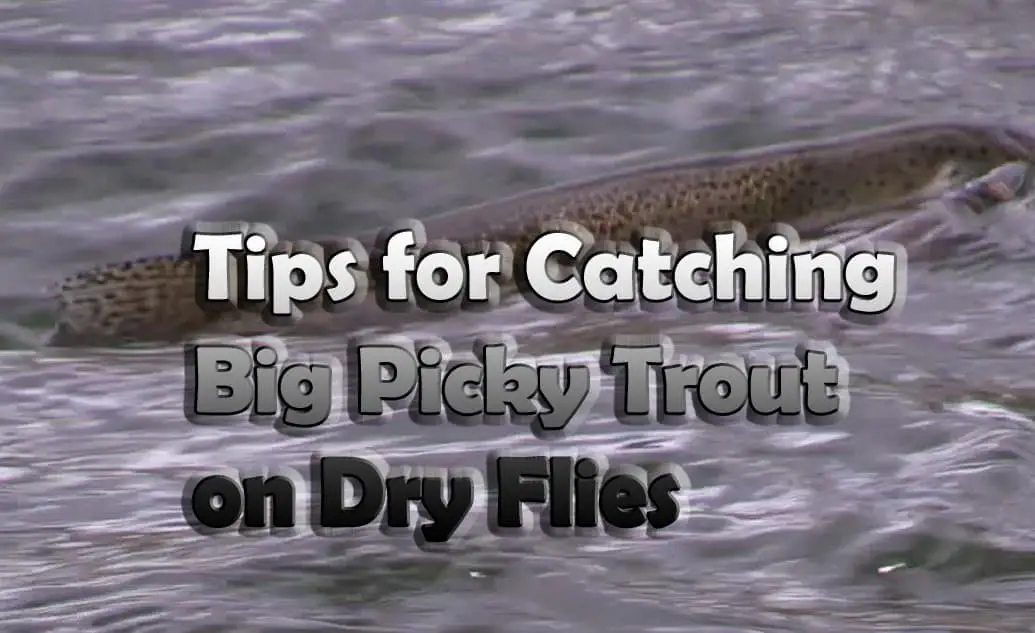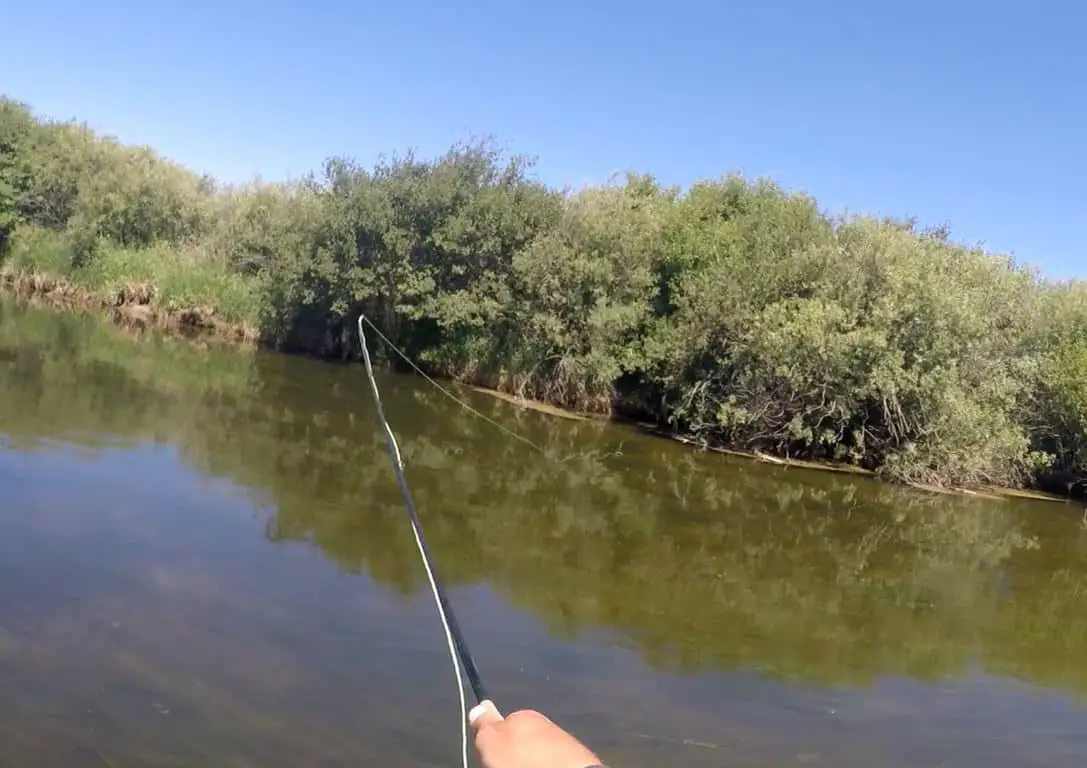This post was last updated on July 20th, 2017 at 02:04 am

How to Catch Big Picky Trout on Dry Flies –
When you are casting at an 8″ brook trout, you can get away with some sloppiness in your drifting and fly presentation—fishing for large trout that have PHD’s in human behavior is a whole different story. Have you ever watched a big trout feed several times and as soon as you attempt to catch it, the feeding stops and the trout is gone? If so, this article is for you. Big trout in heavily fished areas are going to be hard to catch and they will not tolerate bad drifting. One wrong move and it will be over before your fly even drifts over the fish. Being a guide, I watch people make these mistakes often. Learn to be patient/more careful with every move and even the most picky big trout can be caught. Follow these tips and I guarantee you will catch more big fish on heavily fished waters. These tidbits are especially essential when fishing in very slow and clear rivers. If the fish is not eating your fly, it probably isn’t because you are using 4x tippet vs 6x—it might be because you have made it aware that it is being pursued.
Don’t Pull Out Your Fly in Front of the Trout
Lets say you just casted at the fish of your dreams, but your fly is not quite where you would like it. If your fly is upstream of the fish and even in it’s general area, you should finish your drift and let it go down stream of the fish before re-casting. All too often I see people pull their fly out of the water to recast while it is still in the direct line of sight of the fish. If the fish watches you pull your fly out of the water, that might be the end of your opportunity to catch it.
Wait Until you Know Exactly where the Fish is Before Casting at it
Often times fish will move around and feed in different positions. One hit might be 10 feet upstream or downstream of where the fish was feeding moments before. If the fish moves and you land on top of it, you might have blown your shot. Wait until you are certain of the trout’s location before sending in your fly. It is common for me to watch a fish for a few minutes before I even make the first cast. By carefully assessing the situation, I can be lined up perfectly in the optimal position and know precisely where that fish is and when it is likely to come back to the surface to feed. If the water is covered in real flies, the fish obviously cannot eat every one that comes through, so paying attention to its feeding frequency can increase the odds.
Hot Tip!: Big fish are commonly found hiding very close to trees and brush, therefore you are likely to catch those branches. I recommend breaking the fly off with one quick tug as fast as possible. Shaking and bouncing the tree branch is going to alarm that fish! The less the branch moves, the better your odds of netting that trout. Usually one sharp jerk of the rod and you can break the tippet, while barely even moving the branch. After you’ve landed that trout, you can walk over and collect your lost flies.
Get Your Line Mended Before it is in the ” Zone”
This one is pretty obvious, but a common mistake nonetheless. Get that line mended ASAP, don’t wait until the fish is watching it before you attempt to mend. If that fish sees even a little drag on your fly from either mending a little bit too big, or not mending at all, it could be game over. Don’t allow that fly to drag over that fish! This goes back to the previous paragraph where I talked about getting yourself positioned optimally before even casting at the trout. The better your position, the less of a mend you’ll need and the more likely you’ll be to catch the fish.
Use Caution When Pulling Out Your Fly
Please for the love of god, don’t pull your fly out of the water so fast and abruptly that it makes that obnoxious popping noise. You want to talk about a good way to put down a big trout, that is the best way I can think of—you might as well be throwing rocks in the water. Pull your fly off the water slowly and proceed with your backcast after your fly is out of the water or already in motion.

Keep Your Distance!
It’s a good idea to stay as far away as possibly from big feeding trout. I usually stay 40′ or more from a fish I really want to hook. The slower and clearer the water, the more distance you should keep between you and your prize. If you are fishing fast water or riffles, you should be able to get quite close. One should also pay close attention to where your shadow is going. Nothing will put a trout at red alert faster than a large shadow moving towards it.
Land Your Fly Well Upstream of the Trout
You don’t want the fish to see your fly land on the water. You also want to ensure the fish can see your fly coming, so casting too close to the fish will not only potentially scare it, but the fish won’t even know it’s there. The trout are watching upstream anticipating food coming down to them, they are not watching for flies to land directly on their heads.
Using these tips you should be on your way to upping your game on some heavily fished water with big trout.
